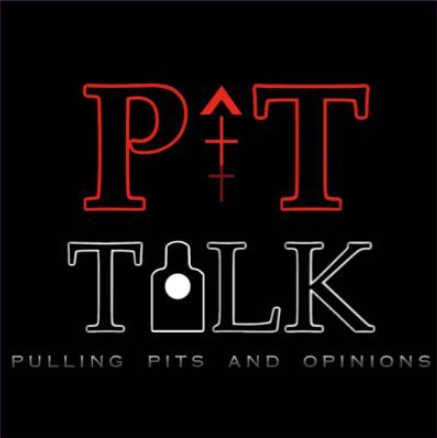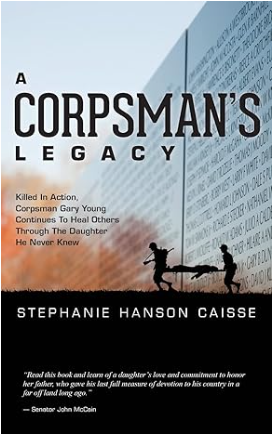Tattoos have long been a significant part of Marine Corps culture, symbolizing personal pride, unit loyalty, and the shared experiences of those who serve. From the early days of the Corps to the modern era, Marine tattoos have evolved, reflecting the changing times and missions. This post delves into the rich history and cultural significance of Marine tattoos, encouraging Marines to share their own ink stories and photos in the comments.
Tattoos are more than just body art; they are a form of expression that tells a story. For Marines, tattoos often commemorate significant events, deployments, and personal milestones. They serve as a permanent reminder of the bonds formed and the challenges overcome. The tradition of tattooing in the Marine Corps dates back over a century, with each generation adding its own unique mark to this enduring practice.
The tradition of tattooing in the Marine Corps can be traced back to the early 20th century. During this time, tattoos were primarily seen among sailors and Marines who had traveled to exotic ports. These early tattoos often featured nautical themes, such as anchors, ships, and mermaids, reflecting the maritime nature of the Corps.
One of the earliest known Marine tattoos is the “Globe and Anchor,” symbolizing the Marine Corps emblem. This design became popular among Marines who wanted to display their pride and affiliation with the Corps. As the Marine Corps grew and evolved, so did the variety and complexity of the tattoos.
World War II marked a significant period in the history of Marine tattoos. As thousands of young men joined the Corps and were deployed to various theaters of war, tattoos became a way to commemorate their service and experiences. Common designs from this era included eagles, bulldogs (the Marine Corps mascot), and patriotic symbols like the American flag.
During this time, tattoo parlors near military bases saw a surge in business, with many Marines getting inked before heading overseas. These tattoos served as a source of pride and a reminder of home, providing a sense of identity and belonging in the face of the uncertainties of war.
The Vietnam War era saw a shift in the style and meaning of Marine tattoos. Many Marines began to get tattoos that were more personal and reflective of their individual experiences. Unit insignias, dates of service, and names of fallen comrades became common themes. These tattoos were a way to honor the memory of those who had served and sacrificed.
The use of tattoos as a form of personal expression continued to grow, with more intricate and detailed designs becoming popular. The tattoos from this era often carried deep emotional significance, serving as a permanent tribute to the bonds formed in combat.
In the modern era, Marine tattoos have become even more diverse and personalized. Advances in tattoo artistry have allowed for more complex and detailed designs, with Marines choosing tattoos that reflect their unique experiences and identities. From traditional symbols like the Eagle, Globe, and Anchor to more contemporary designs, Marine tattoos continue to evolve.
The Marine Corps has also implemented regulations regarding tattoos, balancing the tradition of tattooing with the need for professionalism and uniformity. These regulations ensure that tattoos are appropriate and do not detract from the image of the Corps.
Marine tattoos are more than just body art; they are a reflection of the values, experiences, and identity of those who serve. They symbolize the pride, loyalty, and camaraderie that define the Marine Corps. Each tattoo tells a story, whether it’s a tribute to a fallen comrade, a reminder of a significant deployment, or a symbol of personal achievement.
Tattoos also serve as a way to connect with fellow Marines, both past and present. They are a visible reminder of the shared experiences and bonds that unite the Marine Corps community. Whether it’s a simple design or an elaborate piece of art, each tattoo is a testament to the enduring spirit of the Marines.
Top 5 Tattoos Marines Tend to Get Inked
Eagle, Globe, and Anchor: The emblem of the Marine Corps, symbolizing the commitment to defend the nation. This tattoo is a popular choice for its deep-rooted significance and pride.
Bulldog: Representing the Marine Corps mascot, the bulldog symbolizes tenacity and loyalty. It’s a common tattoo among Marines who want to showcase their fighting spirit.
Unit Insignias: Many Marines choose to get tattoos of their unit insignias, commemorating their service and the bonds formed with their fellow Marines. These tattoos often include the unit’s motto or emblem.
Patriotic Symbols: Flags, eagles, and other patriotic symbols are popular choices, reflecting the Marines’ dedication to their country. These tattoos often incorporate elements of the American flag or other national symbols.
Death Before Dishonor: This phrase symbolizes a deep commitment to personal integrity and loyalty, reflecting the belief that maintaining one’s honor is more important than life itself. Often accompanied by images like skulls, daggers, or eagles, this tattoo is a powerful statement of the Marine’s values and dedication.
Share Your Ink:
We invite all Marines to share their own tattoo stories and photos in the comments. Whether you have a traditional design or a unique piece that holds special meaning, we want to see and hear about your ink. Your tattoos are a part of the rich tapestry of Marine Corps history, and sharing them helps keep this proud tradition alive.
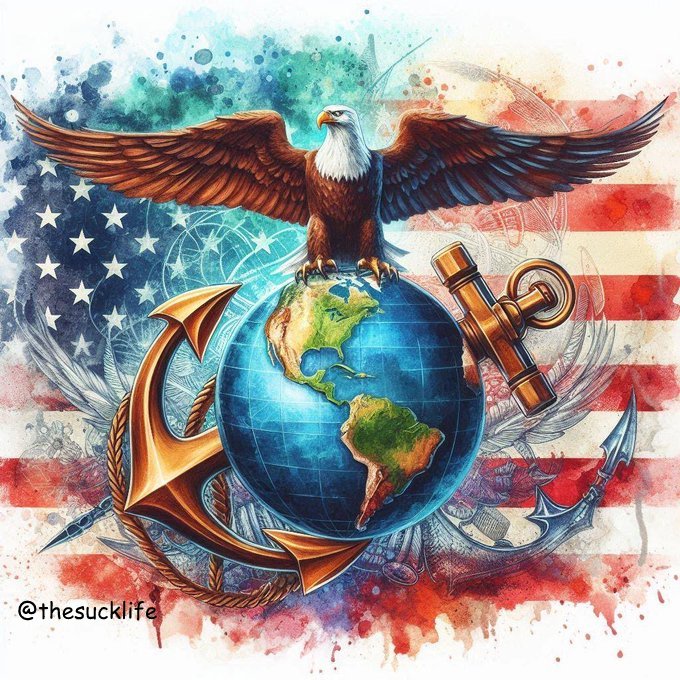
Semper Fi
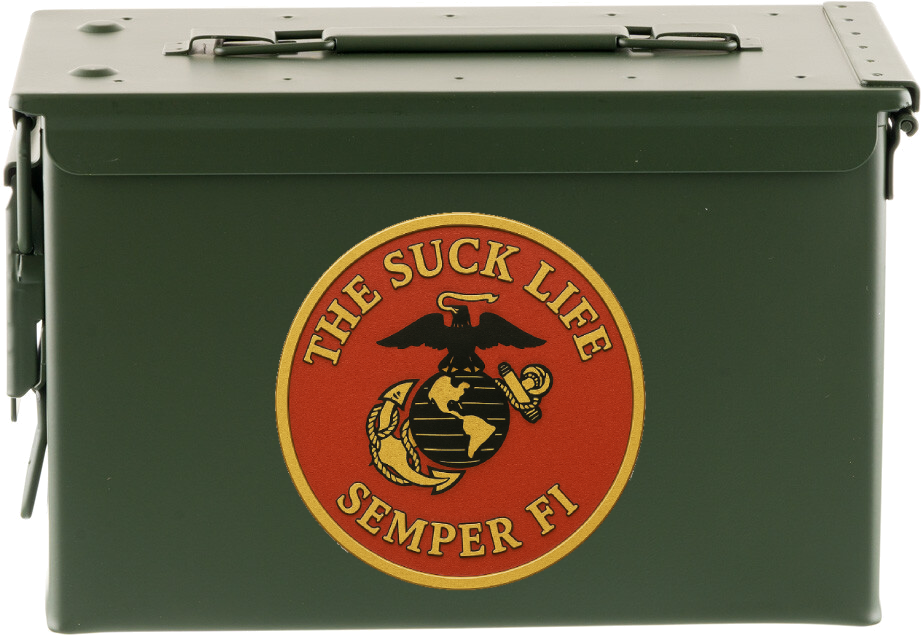
Ads suck. This site is 100% ad-free and reader-supported.
If this article added value to your day or meant something to you, toss a couple bucks in the ammo can to keep us in the fight. Thank you.



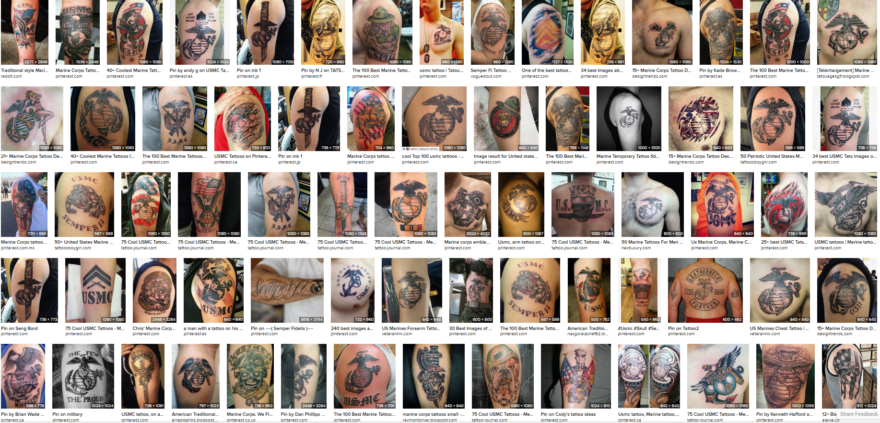
 Semper Fidelis
Semper Fidelis
